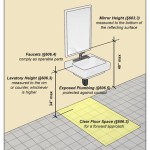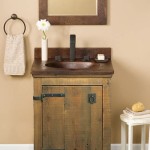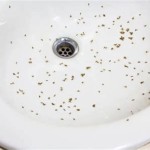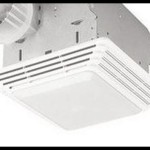How to Clean Stains on Bathroom Floor
Bathroom floors are frequently subjected to a variety of staining agents, ranging from hard water and soap scum to mildew and spilled toiletries. Maintaining a clean and sanitary bathroom environment requires the prompt and effective removal of these stains. This article provides a comprehensive guide to identifying common bathroom floor stains and the methods employed to eliminate them.
Different types of flooring materials found in bathrooms, such as tile, vinyl, and stone, necessitate specific cleaning approaches. Employing the wrong cleaning agent or technique could potentially damage the flooring surface, leading to discoloration or erosion. Therefore, identifying the type of stain and the type of flooring is crucial before commencing any cleaning procedure.
Identifying the Stain
Before attempting to clean a stain, it is essential to identify its source. Common bathroom floor stains include:
Hard Water Stains: These stains appear as white or grayish mineral deposits around faucets, drains, and areas frequently exposed to water. Hard water contains high concentrations of minerals like calcium and magnesium, which leave residue upon evaporation.
Soap Scum: Soap scum is a stubborn, cloudy film that accumulates on bathroom surfaces, including floors. It is formed by the combination of soap, hard water minerals, and body oils. It can appear as a dull film or build into a thicker, textured layer.
Mold and Mildew: These fungal growths thrive in damp, poorly ventilated environments. Mold and mildew stains can appear as black, green, brown, or even pink patches on grout lines, corners, and near water sources. Mold can release allergenic spores that can cause health issues.
Rust Stains: Rust stains result from the oxidation of iron, often from metal objects left on the floor, such as shaving cream cans or metal trim on bath mats. They typically appear as reddish-brown or orange discolorations.
Toiletries and Personal Care Products: Spilled shampoo, conditioner, hair dye, or other personal care products can cause discoloration and staining, especially if left unattended. The chemical composition of these products can interact with the flooring or grout and cause lasting damage.
Cleaning Methods for Different Flooring Types
Once the type of stain has been identified, select the appropriate cleaning method based on the flooring material:
Tile Flooring: Tile flooring, including ceramic and porcelain, is generally durable and resistant to stains. However, grout lines are porous and prone to absorbing stains. The following methods are effective for cleaning tile floors:
For General Cleaning: Begin by sweeping or vacuuming the floor to remove loose debris. Then, mop the floor with a solution of warm water and a pH-neutral tile cleaner. Avoid using abrasive cleaners, as they can scratch the tile surface. For stubborn stains, use a soft-bristled brush or sponge to scrub the affected area.
For Hard Water Stains: Apply a solution of equal parts white vinegar and water to the stained area. Let it sit for 10-15 minutes, then scrub with a non-abrasive sponge or brush. Rinse thoroughly with clean water.
For Soap Scum: Create a paste of baking soda and water. Apply the paste to the soap scum and let it sit for 15-20 minutes. Scrub with a sponge or brush, then rinse well with water.
For Mold and Mildew: Mix a solution of bleach and water (1 part bleach to 10 parts water). Apply the solution to the affected area and let it sit for 10-15 minutes. Scrub with a brush, then rinse thoroughly with water. Ensure proper ventilation when using bleach. Consider using a mold and mildew inhibiting sealant to prevent recurrence.
Vinyl Flooring: Vinyl flooring is relatively water-resistant and easy to maintain, but it can be susceptible to staining from certain substances. The following methods are suitable for cleaning vinyl floors:
For General Cleaning: Sweep or vacuum the floor to remove loose dirt. Mop the floor with a solution of warm water and a vinyl floor cleaner. Avoid using abrasive cleaners or scouring pads, as they can scratch the vinyl surface. A microfiber mop is recommended for optimal cleaning.
For Hard Water Stains: Mix equal parts white vinegar and water. Apply solution to stain, allow to soak for 5-10 minutes, and wipe away with a clean cloth.
For Soap Scum: Use a commercially available soap scum remover designed for vinyl. Follow the manufacturer's instructions carefully. Alternatively, create a paste of baking soda and water and gently scrub the affected area.
For Mold and Mildew: Apply a solution of mild dish soap and water to the affected area. Gently scrub with a soft-bristled brush. Rinse thoroughly with clean water. Refrain from using bleach on vinyl flooring unless it is diluted significantly, as it can cause discoloration.
For Stubborn Stains: Create a paste with baking soda and water. Let this mixture absorb the stain for 30 minutes before gently scrubbing it. Rinse the area thoroughly and dry it with a clean cloth.
Stone Flooring: Stone flooring, such as marble, granite, and slate, requires special care due to its porous nature. Avoid using acidic or abrasive cleaners, as they can damage the stone surface. Consider the following cleaning methods:
For General Cleaning: Sweep or vacuum the floor to remove loose debris. Mop the floor with a pH-neutral stone cleaner diluted according to the manufacturer's instructions. Use a soft mop or cloth to avoid scratching the stone.
For Hard Water Stains: Apply a solution of warm water and a specialized stone cleaner designed for hard water stain removal. Let it sit for a few minutes, then gently scrub with a soft cloth or sponge. Rinse thoroughly with clean water.
For Soap Scum: Use a commercially available soap scum remover specifically formulated for stone surfaces. Test the cleaner in an inconspicuous area first to ensure it does not discolor or damage the stone.
For Mold and Mildew: Apply a solution of water and a mild detergent designed for stone. Gently scrub with a soft-bristled brush. Rinse thoroughly with clean water. Consider applying a stone sealant to help prevent future mold and mildew growth.
For Oil-Based Stains: To extract oil-based stains, create a poultice by mixing baking soda with water or a solvent recommended for stone. Apply the poultice to the stain generously, covering it completely. Cover the area with plastic wrap and let it sit for 24-48 hours. The poultice will draw the oil out of the stone. Remove the poultice and clean the area with a stone cleaner. Repeat as needed until the stain is gone.
Addressing Grout Stains
Grout lines, regardless of the flooring type, are particularly susceptible to staining due to their porous nature. The following techniques are effective for cleaning stained grout:
Baking Soda Paste: Mix baking soda with water to form a thick paste. Apply the paste to the stained grout lines and let it sit for 30 minutes. Scrub vigorously with a grout brush, then rinse with clean water.
Vinegar and Baking Soda: Sprinkle baking soda on the grout lines, then spray with white vinegar. The mixture will fizz. Let it sit for a few minutes, then scrub with a grout brush. Rinse thoroughly with water.
Bleach Solution: For stubborn grout stains, mix bleach with water (1 part bleach to 10 parts water). Apply the solution to the grout lines and let it sit for 10-15 minutes. Scrub with a grout brush, then rinse thoroughly with water. Ensure proper ventilation when using bleach.
Grout Cleaner: Use a commercially available grout cleaner specifically designed for removing stains. Follow the manufacturer's instructions carefully. Always test in an inconspicuous area before full application.
Steam Cleaner: A steam cleaner can be effective for removing dirt and stains from grout lines without the use of harsh chemicals. Direct the steam nozzle along the grout lines and scrub with a grout brush as needed.
Sealing Grout: After cleaning the grout, consider applying a grout sealant to help prevent future staining. Grout sealants create a barrier that prevents stains from penetrating the grout pores.
Preventive Measures
Preventing stains from occurring in the first place is the most effective way to maintain a clean bathroom floor. Consider the following preventive measures:
Regular Cleaning: Clean the bathroom floor regularly with a pH-neutral cleaner to prevent the buildup of dirt, soap scum, and hard water deposits.
Immediate Spill Cleanup: Clean up spills immediately to prevent them from penetrating the flooring material and causing stains. Use a clean cloth or paper towel to absorb the spill.
Proper Ventilation: Ensure proper ventilation in the bathroom to reduce humidity and prevent mold and mildew growth. Use an exhaust fan during and after showers and baths.
Grout Sealing: Seal grout lines regularly to prevent staining and make cleaning easier.
Use Bath Mats: Place bath mats near the shower, tub, and sink to absorb water and prevent it from pooling on the floor.
Avoid Harsh Chemicals: Avoid using harsh chemicals or abrasive cleaners on bathroom floors, as they can damage the flooring material and grout.
Water Softener: Install a water softener to reduce the mineral content in the water, preventing hard water stains from forming.
Regular Inspections: Examine your bathroom floor regularly for any signs of staining or damage. Early detection can prevent stains from becoming permanent.
Applying these techniques and measures will assist in maintaining a clean and stain-free bathroom floor, contributing to a more hygienic and visually appealing home environment. Consistent maintenance and prompt attention to stains are paramount for the longevity and aesthetic appeal of bathroom flooring.

3 Ways To Remove Stains From Tiles Wikihow

How To Clean Tiles With Stubborn Stains Bathroom Hardone Forums

3 Best Ways To Get Rid Of Hard Water Stains From Bathroom Tiles Kent

Remove Hard Water Stains From Bathroom Floors Bond Cleaning In Adelaide

How To Remove Even The Toughest Stains From A Tile Floor

How To Clean Red Mud Paint And Other Stains Off Tile New Life On A Homestead

How To Remove Hard Water Stains From Bathroom Floor Tiles

How To Clean Bathroom Floor Tiles Any Type Hard Stain Dirty Cleaning Tips

How To Remove Even The Toughest Stains From A Tile Floor

How To Remove Hard Water Stains From Tile And Grout Woodard
Related Posts







